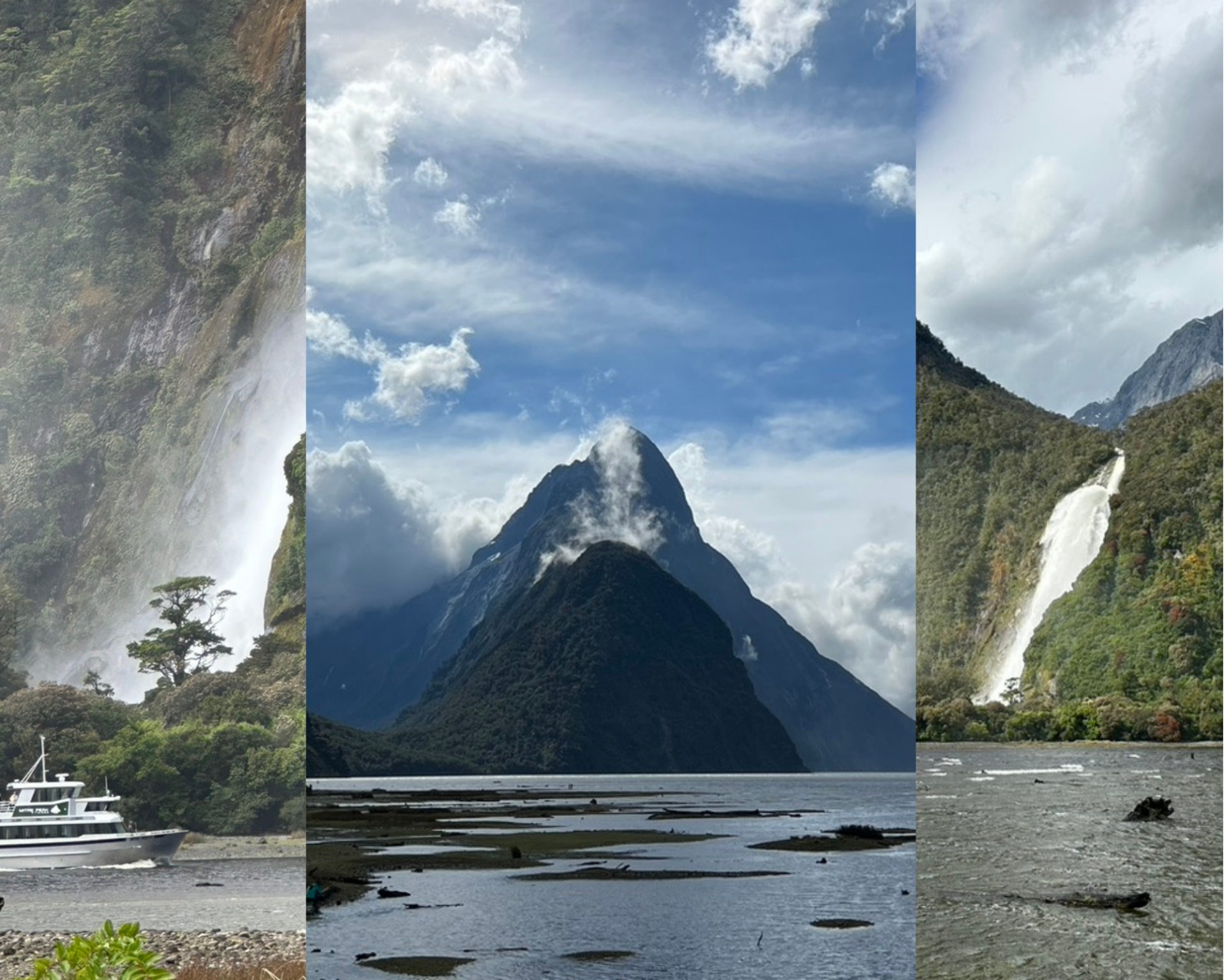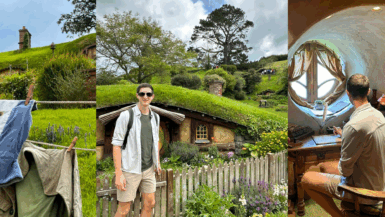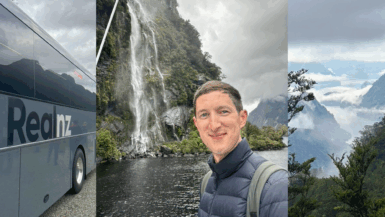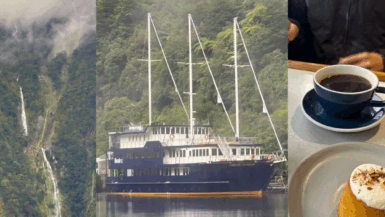Milford Sound is one of those places that shows up in every New Zealand travel brochure — and for good reason. It’s remote, dramatic, and genuinely beautiful. Whether you’re standing at the edge of the water or just taking in the views on the way there, it leaves an impression.
This complete travel guide to Milford Sound is here to help you plan your trip, whether you’re doing a quick day tour or making it part of a longer, slower South Island itinerary. I’ve included everything I wish I knew ahead of time, plus a few personal insights for good measure.
Book your cruise around Milford Sound here!
Table of Contents
What is Milford Sound?
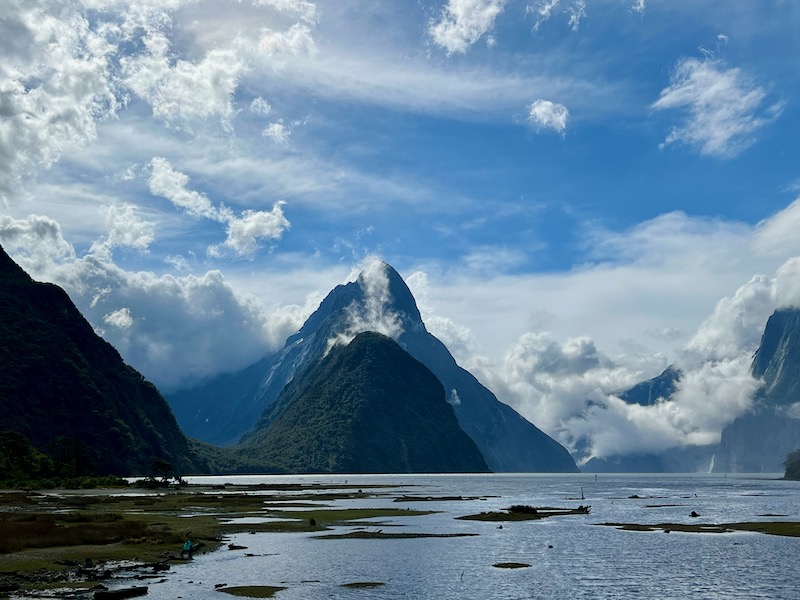
Milford Sound (Piopiotahi) is a fjord on the southwest coast of New Zealand’s South Island. It’s located within Fiordland National Park, part of the larger Te Wahipounamu UNESCO World Heritage Area.
Despite its name, Milford Sound is technically a fjord, not a sound — formed by glacial activity rather than river erosion. It’s surrounded by steep rock walls, most notably Mitre Peak, and fed by frequent rain that creates dozens of temporary waterfalls during storms.
For many travelers, Milford is a top highlight in New Zealand. It’s popular — especially in summer — but still feels wild and remote. That combination makes it easy to see why it’s become one of the country’s most photographed spots.
How to Get to Milford Sound
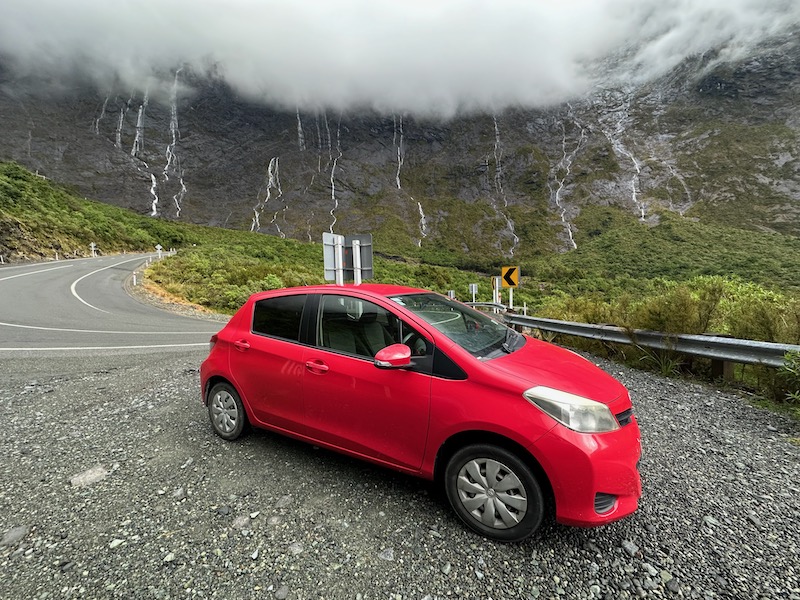
Milford Sound is very remote — and that’s part of its appeal — but getting there is straightforward if you know what to expect.
Queenstown to Milford Sound
If you’re starting in Queenstown, you’re looking at a 4 to 5-hour drive one way (without stops). It’s a long day if you’re trying to do it all in one go, which is why some travelers opt for a tour instead of self-driving.
That said, the drive is beautiful — especially once you get past Te Anau and enter Fiordland National Park. This section of the trip includes alpine scenery, mirror lakes, and dramatic mountain passes. Just know that once you hit the Homer Tunnel, the road narrows and becomes more winding.
Book a day trip to Milford Sound from Queenstown here!
Te Anau to Milford Sound
Te Anau is the last town before Milford and the best base for day trips. From here, it’s about a 2-hour drive, but budget more time for photo stops and short walks.
I actually stayed in Manapouri, which is more commonly used for trips to Doubtful Sound, but it’s close to Te Anau and could work as a quieter alternative.
Travel Options to Milford Sound
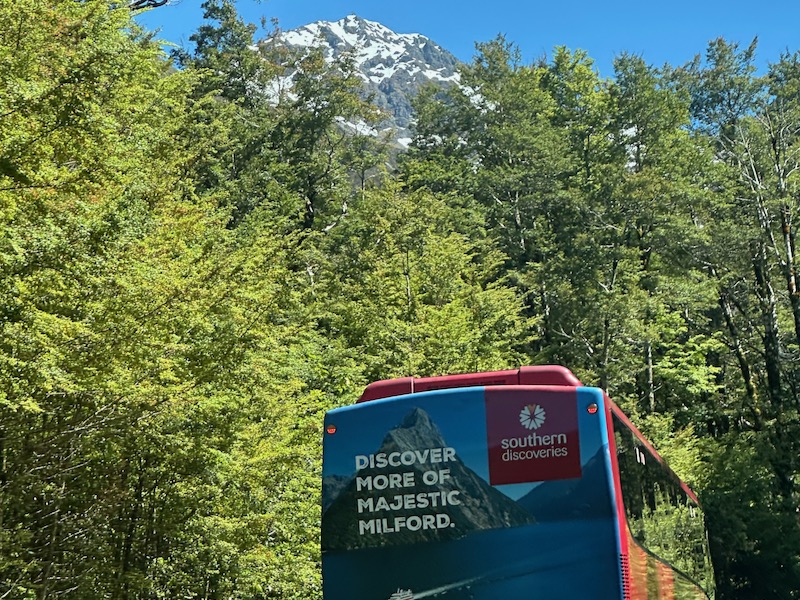
- Self-drive: Ideal if you want to take your time and stop along the way. Make sure to fuel up in Te Anau — there are no petrol stations in Milford.
- Bus tours: Many companies offer day trips from Queenstown or Te Anau. These are convenient but long days, especially from Queenstown.
- Small group tours: Good option if you want a more personal experience without the hassle of driving.
- Scenic flights: If you’re short on time and have the budget, you can fly in from Queenstown — some packages even include a cruise.
Tip: Download offline maps ahead of time. Service is patchy at best once you leave Te Anau, and GPS dropouts are common.
Book a rental car from Queenstown to Milford Sound here!
Milford Sound Cruises: Day vs Overnight
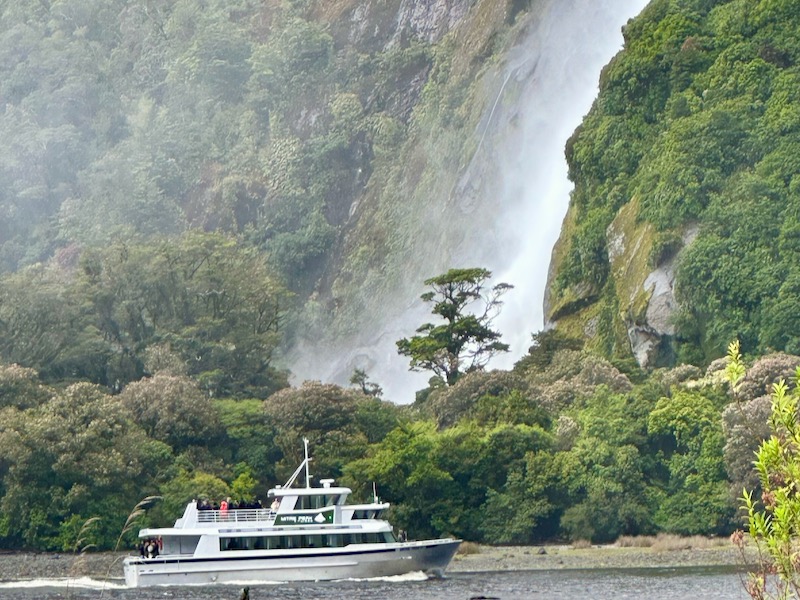
For most travelers, a cruise is the main way to experience Milford Sound — and there are two main types: day cruises and overnight cruises.
Milford Sound Day Cruises
These are by far the most popular option. Most cruises last between 1.5 to 2 hours, taking you past the major sights like Mitre Peak, Stirling Falls, and the Tasman Sea. You’ll see waterfalls, steep cliffs, and maybe even some wildlife like seals or dolphins.
Day cruises run frequently, especially in the summer months. Some are large, multi-level boats, while others are smaller and more personal. If you’re coming from Queenstown, most day tours include transport and a cruise as a bundled package.
Milford Sound Overnight Cruises
If you’re after a slower, less crowded experience, an overnight cruise is worth considering. These usually include dinner, a cabin, and time to explore after the day-trippers have left. You’ll have the chance to stargaze, kayak, or just enjoy the quiet — which is rare in such a popular destination.
They’re more expensive and less frequent, so you’ll need to book well in advance, especially in peak season. But for travelers who want to really experience Milford Sound without the crowds, it’s probably the best option available.
Book an overnight cruise through Milford Sound here!
Which One is Better? Day Trip or Overnight Cruise?
If your budget or schedule only allows for one, a day cruise still gives you a solid introduction to Milford. But if you’re someone who values slower, quieter travel — or you’re visiting during a busy time — the overnight option offers more space and time to appreciate the landscape.
Milford Sound Tours & Day Trips
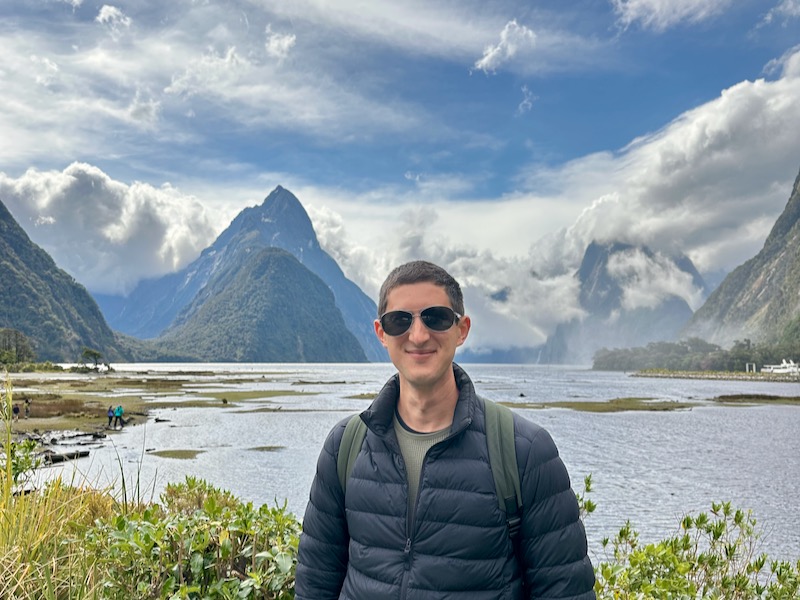
You don’t have to do a cruise to enjoy Milford Sound, although it is the most common route. Whether you’re doing a quick visit or looking to fill a full day, here are some of the main options.
Milford Sound Self-Guided Day Trip
If you have a rental car, a self-guided trip gives you the most flexibility. You can stop at scenic lookouts like Eglinton Valley, Mirror Lakes, and The Chasm on your way in, and you’re not tied to a tight group schedule.
Keep in mind that parking near the cruise terminal now costs around $10 NZD, and it can fill up during peak times.
Milford Sound Guided Day Tours
Plenty of operators run day trips from both Queenstown and Te Anau, usually with a cruise included. These are long days if you’re coming from Queenstown — expect to leave before 7 AM and return after 7 PM — but they take the pressure off navigating the drive.
Book a Milford Sound Guided Day Tour here!
Should You Base Yourself in Te Anau?
If you’re not into long day trips, staying in Te Anau makes a big difference. It turns a full-day ordeal into a more manageable excursion and gives you a chance to explore some lesser-known spots in Fiordland while you’re at it.
Kayaking & Hiking in Milford Sound
Milford Sound is best known for its boat cruises, but there’s more than one way to experience the fjord — especially if you want to get off the beaten path a bit. Kayaking and hiking are great options if you’re looking to slow things down and see the area from a different perspective.
Kayaking in Milford Sound
Kayaking gives you a closer, more low-key look at the landscape. Without the hum of a boat engine, the place feels quieter — you can hear waterfalls, birdsong, and sometimes even the sound of seals splashing around.
There are several tour operators offering guided kayaking trips, usually around 2–3 hours long. Some go early in the morning when the water is calm and the light is soft. You don’t need prior experience — just a reasonable level of fitness and comfort being on the water.
If you’re into slow travel or wildlife spotting, this is a solid way to go. Just be aware the weather can shift quickly, and kayaking trips are sometimes canceled due to conditions.
Hiking Around Milford Sound

There aren’t a ton of hiking options right in Milford Sound, but there are several well-known trails nearby worth checking out.
- Key Summit Track (part of the Routeburn Track): A great half-day hike with alpine views and a fairly steady incline. Easy to reach from the Milford Road.
- The Chasm Walk: Short and easy, this trail leads to a series of powerful waterfalls cutting through rock — only a few minutes from the main road.
- Lake Marian Track: A bit more challenging but worth it. Takes around 3 hours return and ends at a glacial lake surrounded by peaks.
The full Milford Track is one of New Zealand’s Great Walks — a multi-day hike that requires advanced bookings and proper gear. But if you’re sticking to shorter walks, the trails off the Milford Road are accessible and still offer plenty of variety.
Milford Sound Accommodation: Where to Stay
There aren’t a lot of places to stay in Milford Sound itself, so most travelers base themselves nearby — usually in Te Anau, Manapouri, or campgrounds along the Milford Road.
- Milford Sound Lodge
- The only accommodation in Milford Sound itself.
- Offers private chalets and a campervan site.
- Ideal if you want to stay close to the fjord, but it books out fast and is on the pricier side.
- Te Anau
- The most practical base for most travelers.
- Full range of accommodations from hostels to lakeside lodges.
- Also has restaurants, supermarkets, and fuel — all of which you won’t find in Milford Sound.
- Manapouri
- Quieter than Te Anau and better suited if you’re also visiting Doubtful Sound.
- Limited options but peaceful and scenic.
- I stayed here and liked it for the slower pace.
- Campervan & DOC Campsites
- DOC (Department of Conservation) campgrounds are dotted along the Milford Road.
- Great for budget travelers and those in campervans, but minimal facilities.
- Powered sites are available at Milford Sound Lodge — book early.
Best Time to Visit Milford Sound
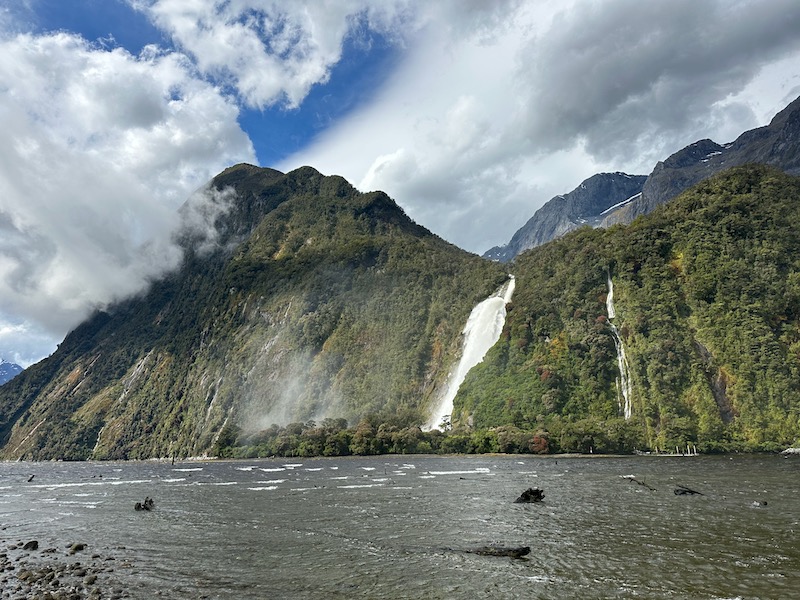
One thing you should know up front: Milford Sound gets a lot of rain. It’s one of the wettest places in New Zealand, with rainfall spread across more than 200 days each year. But that’s not necessarily a bad thing — the rain is what makes the waterfalls so impressive, and the landscape feels more alive during a storm than it does on a clear day.
Here’s what to expect across the seasons:
Summer (December to February)
- Busiest time of year
- Warmer temperatures, longer daylight hours
- Book tours and accommodation well in advance
Autumn (March to May)
- Fewer crowds
- Cooler temperatures, especially in the mornings
- Still a good time for cruising or hiking
Winter (June to August)
- Snow-capped peaks and fewer tourists
- Some roads may be icy, so take care if driving
- Cruises still run but weather can affect schedules
Spring (September to November)
- Waterfalls picking up again as the snow melts
- Less busy than summer
- A bit of everything weather-wise
My take? Don’t try to avoid the rain — embrace it. On a rainy day, the cliffs are covered in waterfalls, and it’s honestly more dramatic than a sunny day. Just make sure you’ve got waterproof layers, especially if you’re planning to be outdoors for long stretches.
Travel Tips for Visiting Milford Sound
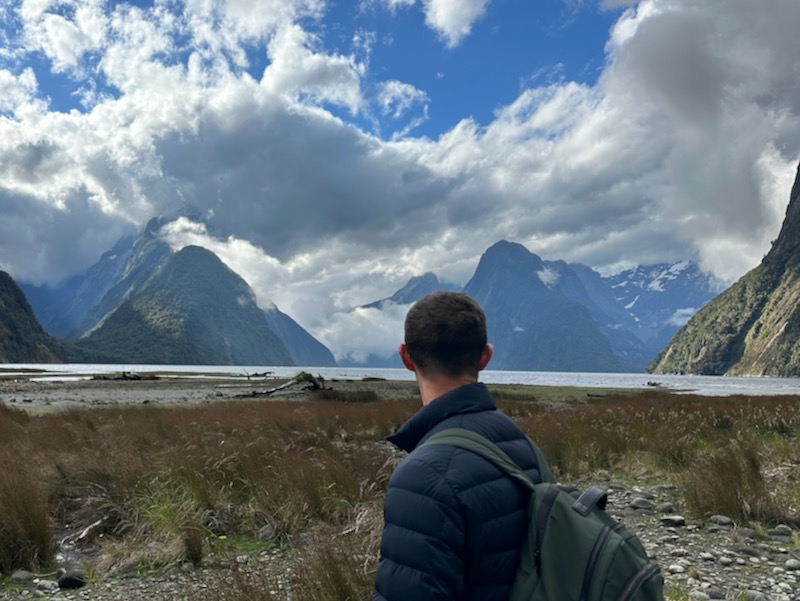
Here are a few tips that’ll make your visit smoother and more enjoyable:
- Pack layers, no matter the season
- The weather is unpredictable — even in summer, it can be cold and wet.
- A waterproof outer layer is essential.
- Rain isn’t a dealbreaker — it’s part of the experience
- The more it rains, the more waterfalls you’ll see.
- Milford Sound in the rain is honestly more impressive than on a clear day.
- Download offline maps and mobile data tools
- There’s no phone service once you leave Te Anau.
- I recommend downloading Google Maps offline, and setting up an Airalo eSIM if you’ll be traveling around NZ.
- Fuel up in Te Anau
- There are no petrol stations on the Milford Road or at Milford Sound.
- Top off before heading in.
- Start early if you’re self-driving
- Tour buses from Queenstown start arriving mid-morning.
- Driving out early means fewer people and more time to enjoy the stops.
- Bring insect repellent
- The sandflies in Milford Sound are no joke — especially around the water and forest trails.
- Book ahead in summer (Dec–Feb)
- Accommodation, cruises, and even some campsites fill up fast during peak season.
- It’s worth planning ahead for peace of mind.
What to Pack for a Milford Sound Trip
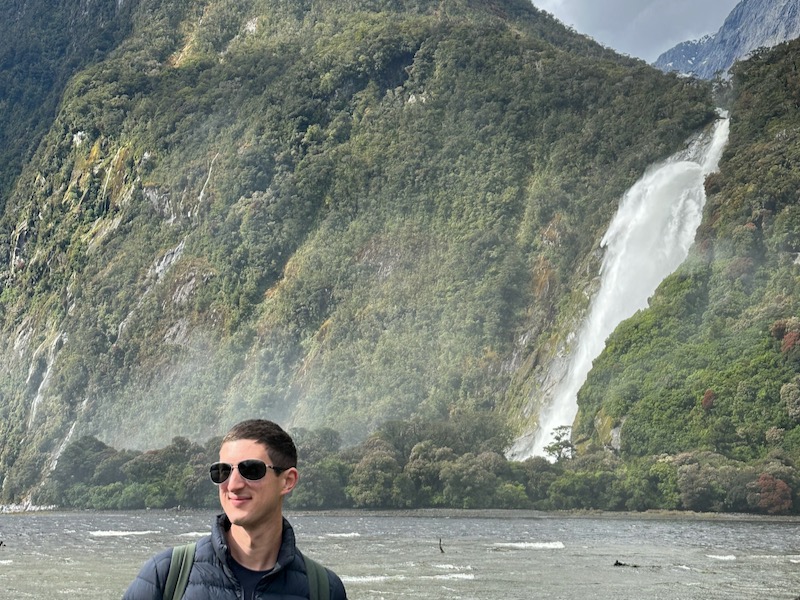
Milford Sound has its own kind of climate — unpredictable, damp, and often colder than you’d expect. Here’s what you’ll want to bring:
- Waterproof jacket or shell
- This is a non-negotiable, even in summer.
- Warm layers
- Think fleece or merino. It can get cold fast, especially if you’re on the water or hiking.
- Sturdy footwear
- For short walks or hiking trails — waterproof is a bonus.
- Bug spray
- The sandflies are relentless, particularly near the water.
- Snacks and water
- Food options are limited, especially if you’re self-driving and not staying overnight.
- Camera or phone with good storage
- You’ll want to capture the landscape, especially if it’s one of those days when the waterfalls are going wild.
- Offline maps / navigation
- No service once you leave Te Anau, so have your route downloaded.
- Optional: Dry bag
- Useful if you’re kayaking or taking gear on a boat — especially in the rain.
Milford Sound Itinerary Ideas
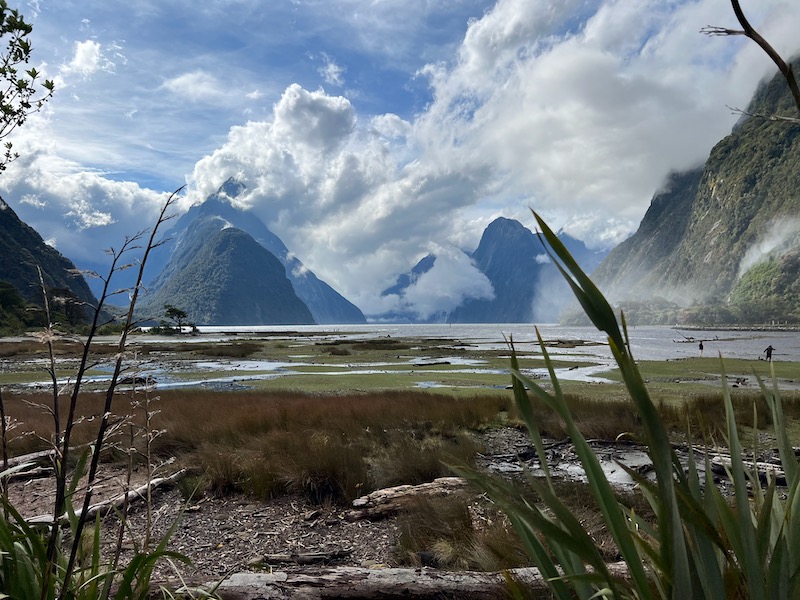
Whether you’re squeezing Milford Sound into a packed South Island road trip or you’re slow traveling with time to spare, here are a few itinerary options to help you plan. Each one includes realistic drive times, pacing suggestions, and ideas for making the most of the journey — not just the destination.
Milford Sound One-Day Trip from Queenstown
It’s a long and ambitious day — around 8 to 10 hours of total driving — but still a popular choice if you’re short on time and want to experience Milford Sound in a single day.
- Early morning departure (around 6 AM)
- The drive from Queenstown to Milford Sound takes around 4 to 5 hours one way, without extended stops.
- You’ll want to leave early to make a midday cruise and still allow time for a couple of scenic pauses along the way.
- Drive through Te Anau and Fiordland National Park
- You’ll pass through Te Anau after about 2 hours — this is your last chance for fuel or food.
- From there, the road into Fiordland is one of the most scenic in the country. Plan short stops at places like Mirror Lakes, Eglinton Valley, and The Chasm.
- Midday cruise (1.5–2 hours)
- Aim for a cruise departing between 12 PM and 2 PM.
- You’ll get a great overview of the fjord’s waterfalls, cliffs, and maybe even seals or dolphins.
- Return drive to Queenstown
- After your cruise, it’s another 4–5 hours back. You’ll be returning in the dark depending on the season, so rotate drivers if possible and be mindful of fatigue.
- Alternative: Join a guided coach tour
- If you’d rather not tackle the drive yourself, many companies run full-day tours from Queenstown with a cruise included. It’s a long day (12–13 hours), but everything is taken care of.
- Optional upgrade: Fly one-way or return
- Scenic flights between Queenstown and Milford are pricey, but they save a ton of time and give you unforgettable views of the Southern Alps and the fjords from above.
Milford Sound Two-Day Trip (Base in Te Anau)
A more comfortable and manageable way to experience Milford Sound.
- Day 1: Drive from Queenstown to Te Anau (2 hours)
- Arrive mid-day and explore Te Anau’s lakeside trails or take a cruise on Lake Te Anau.
- Stock up on groceries or fuel if you’re continuing to Milford the next day.
- Stay overnight in a motel, lodge, or campground.
- Day 2: Drive to Milford Sound (2 hours one way)
- Leave early to beat the tour buses and allow time for scenic stops.
- Enjoy a mid-morning cruise or kayak tour.
- Return to Te Anau in the afternoon for another relaxed night or drive onward.
Milford Sound Three-Day Slow Travel Itinerary
For travelers who want to take their time and see more than just the fjord.
- Day 1: Arrive in Te Anau / Manapouri
- Take it easy with a local walk
- Grab dinner in town — the Te Anau Pie Shop is a casual favorite.
- Stay overnight and rest up for an early start.
- Day 2: Full day in Milford Sound
- Leave early and take your time along the Milford Road — stop at Mirror Lakes, Monkey Creek, Pop’s View Lookout, and The Chasm.
- Book a late morning cruise or half-day kayak experience.
- Have lunch at the café near the cruise terminal or pack your own.
- Optional: Walk the Foreshore Track or visit Bowen Falls afterward.
- Drive back to Te Anau or stay overnight in Milford Sound Lodge (if booked in advance).
- Day 3: Explore more of Fiordland
- Hike the Lake Marian Track, which offers panoramic views with alpine wetlands and interpretive signs.
- Or, if you’re interested in seeing more fjords, start early and head to Manapouri for a Doubtful Sound day cruise.
- Alternatively, use the day to head toward Wanaka, Invercargill, or back to Queenstown, depending on your route.
Final Thoughts: Is Milford Sound Worth Visiting?
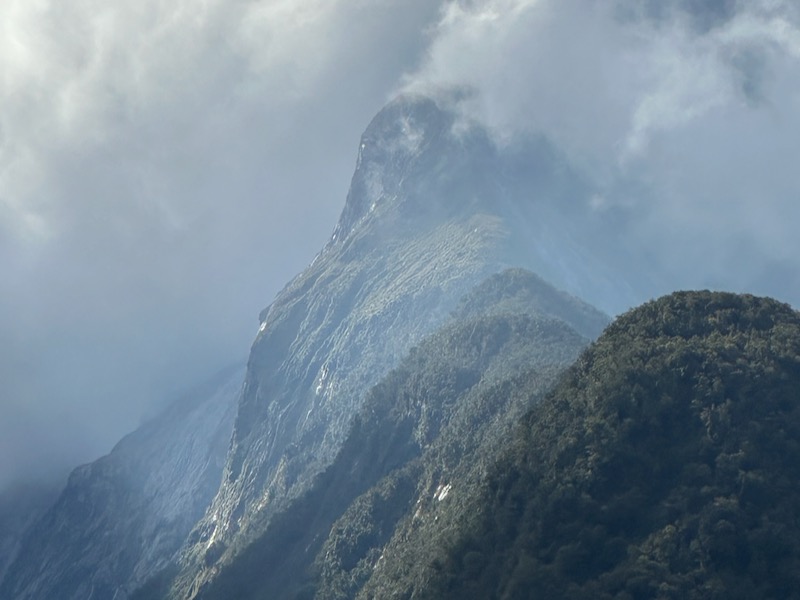
Even though I personally chose Doubtful Sound for my cruise, I still made the trip out to Milford — and I don’t regret it for a second. The drive alone was worth the time, and the view from the end of the road really is as iconic as people say.
If you’re traveling New Zealand’s South Island, Milford Sound deserves a spot on your itinerary. Whether you’re doing it in a day or staying longer, it delivers on the kind of scenery that sticks with you — steep cliffs, dramatic weather, and a raw, unpolished beauty that makes you slow down, even if just for a moment.
If you’re torn between Milford and Doubtful, I’ll be publishing a separate guide to help you choose — but you can’t really go wrong either way.
Milford Sound Travel FAQ
What is the best time to visit Milford Sound?
It depends on what you want — summer (Dec–Feb) is busiest, but the shoulder seasons (spring and autumn) offer fewer crowds and still-decent weather. Winter is quiet and beautiful, but weather can affect travel.
How do I get to Milford Sound from Queenstown?
You can drive (4–5 hours one way), take a day tour, or fly. If you’re driving, consider staying in Te Anau the night before to break it up.
Are Milford Sound cruises worth it?
Yes, especially if it’s your first time visiting. A cruise gives you the full scope of the fjord and gets you up close to the cliffs and waterfalls.
Can you kayak in Milford Sound?
Yes. Guided kayaking tours are available and offer a slower, more personal way to explore the fjord.
What wildlife can I see in Milford Sound?
Seals, dolphins, and sometimes penguins — especially on quieter cruises or early in the morning.
Is there accommodation in Milford Sound?
Yes, but only one option: Milford Sound Lodge. Most travelers stay in Te Anau or Manapouri.
How long is the drive to Milford Sound?
From Queenstown: 4–5 hours one way. From Te Anau: about 2 hours, not counting stops.
What should I pack for a Milford Sound trip?
Waterproof gear, warm layers, bug spray, snacks, and offline maps.
Are there guided tours in Milford Sound?
Yes — both day tours and small group options are available from Queenstown and Te Anau.
What are the top attractions in Milford Sound?
The cruise, the drive through Fiordland National Park, Stirling Falls, Mitre Peak, and stops like The Chasm and Mirror Lakes along the way.

